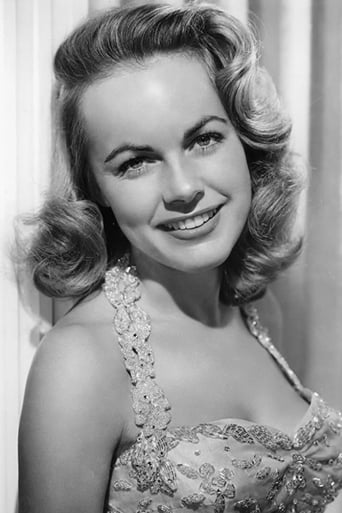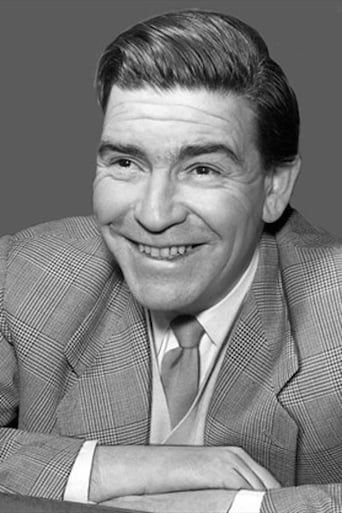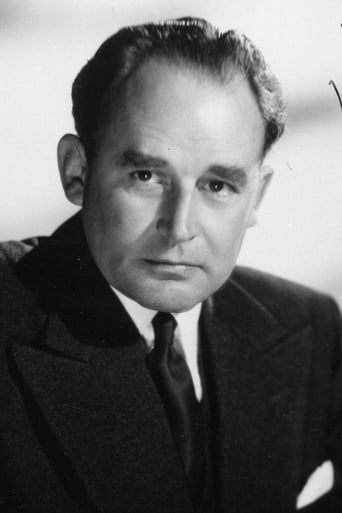ada
the leading man is my tpye
Perry Kate
Very very predictable, including the post credit scene !!!
Manthast
Absolutely amazing
Fairaher
The film makes a home in your brain and the only cure is to see it again.
clanciai
Francis Durbridge shines through with his special knack for women mysteries and their magic presence for being absent, you are reminded both of the Paul Temple series and "Melissa" and other spellbinding thrillers with mystical ladies, and here you have two of them murdered while one of them shows up not being murdered at all.The intrigue is spun around a portrait, a weird old man commissions Robert Beatty, a poor painter and brother of the first casualty of the racket, to paint his lost daughter from a picture of her, which task gets him into thorough trouble, especially since one of his earlier models is found murdered in his flat.It's not a bad film although somewhat superficial, of such an intrigue Hitchcock would have brought out a masterpiece, the action is a bit thick as too many things are happening at the same time and too many threads are being woven together in some confusion, as there is another casualty of a man jumping out of a window and lots of fisticuffs which at least twice completely demolishes the painter's entire flat - there is not much space to fight, but they do it the more thoroughly.In brief, a very entertaining thriller with some magic in it, but you would have preferred the first girl (Josephine Griffin) to Terry Moore, but that's a matter of personal taste..
Khun Kru Mark
Pretty good crime caper.It's far from perfect and has some silly bits in it, but this movie is still a pretty good ride. It also has a topnotch cast of British and American actors to distract nicely from some otherwise hamfisted fight scenes, a rather muddled and implausible plot and a cheesy ending.It's a supposedly British film but even though it has UK locations it comes across as a fairly typical American noir. The director, Guy Green, is British but clearly took his cues from America for this one. There is also an uncomfortable and misguided attempt to try to capture the mid-50s London scene.Robert Beatty is well suited to his role and doesn't overdo the wrongly suspected victim. Lots of interesting parts for movie buffs and 'face watchers' to enjoy. Even 'Captain Peacock' (Frank Thornton) from Are You Being Served makes a brief appearance! (Those Sunday nights watching PBS weren't wasted after all, eh?)Like I say, there's a certain amount of silliness but it still holds up nicely because of the crisp pacing and superior acting talent on display.
blanche-2
This British film from 1955 stars Robert Beatty, Terry Moore, and William Sylvester.Commercial artist Tim Forrester (Beatty) is visited by his brother (Sylvester) and learns that a third brother was killed in a car accident in Italy. A young actress, Alison Ford, was with him and she, too, died.The police seem to be looking for a postcard they believe the dead brother sent to Tim - a drawing of a chianti bottle with a woman's hand holding it, but Tim doesn't have it.The father of the dead Alison commissions him to paint her portrait and gives Tim a photo of her and the dress she wore in the photo. When he returns home one night, the painting has been ruined and one of his models (Josephine Griffin) is dead in the bedroom, wearing the dress from the portrait. He now is a suspect in her murder. Then Alison Ford shows up, not dead at all.The premise is Laura-esque as far as the portrait and the dead woman not being dead, but the similarity ends there. The plot concerns international smuggling, and the postcard is very important as police search for the mysterious head of the ring, Nightingale.The cast has British, Canadian, and American actors in it. It's a bit strange because one of the brothers has a British accent and the other doesn't. Terry Moore is very young and pretty here, and the overall acting is good.Though this is a British film, the outside influences make it seem more American than most of these movies.
bmacv
With its distant echoes of Laura, Postmark for Danger (a.k.a. Portrait of Alison) survives as one of the few English crime dramas of the post-war period with some of the grit and menace of American film noir. (Americans, plus one Canadian, make up the principal cast. But the film betrays its British provenance with its assumption of the utter incorruptibility of the London police - a notion that wouldn't pass muster on the west side of the Atlantic - as well as with its the-butler-did-it resolution.)Robert Beatty, a commercial artist, hears some bad news from his pilot-for-hire brother (William Sylvester): a third brother has died in a fiery car crash in Italy, along with a young actress he had met. Then strange things begin to happen: The police grow interested in a postcard his dead brother may have sent him, as do elements of the underworld; and the father of the actress commissions him to paint a portrait, working from a photograph, of his daughter. Next, he returns to find the portrait vandalized, the photograph missing, and his favorite model dead in his bedroom, wearing the gown in the painting. He becomes the prime suspect in the murder when no evidence can be found to support his wild claims - until the supposedly dead actress (Terry Moore) shows up at his door.At the end of the day, Postmark for Danger settles down into a tidy police procedural about a ring of diamond smugglers. But for much of its course it unfurls in a tantalizing mist of eerie and unlikely coincidences, many of them centering on the word `nightingale.' Credit should probably go to director Guy Green, who started out as a cinematographer (he shot David Lean's Great Expectations). It's an enjoyable if minor entry, albeit one with just a little bit extra.





